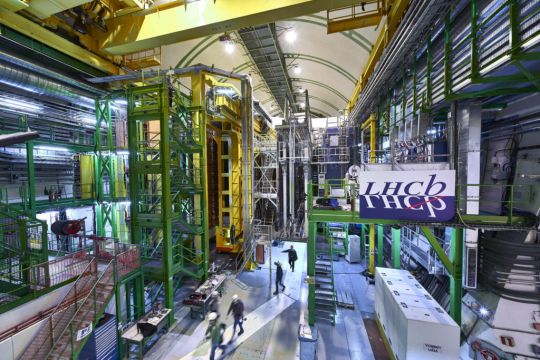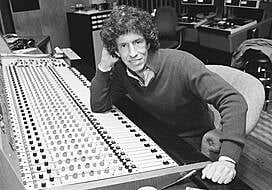Preliminary results from two experiments suggest something could be wrong with the way physicists think the universe works – a prospect that has the field of particle physics baffled and thrilled.
Tiny particles called muons are not quite doing what is expected of them in two different long-running experiments in the United States and Europe.
The confounding results — if proven right — reveal major problems with the rulebook physicists use to describe and understand how the universe works at the subatomic level.
“We think we might be swimming in a sea of background particles all the time that just haven’t been directly discovered,” Fermilab experiment co-chief scientist Chris Polly said in a press conference.
“There might be monsters we haven’t yet imagined that are emerging from the vacuum interacting with our muons and this gives us a window into seeing them.”
The rulebook, called the Standard Model, was developed about 50 years ago. Experiments performed over decades affirmed over and again that its descriptions of the particles and the forces that make up and govern the universe were pretty much on the mark – until now.
“New particles, new physics might be just beyond our research,” said Wayne State University particle physicist Alexey Petrov. “It’s tantalising.”
The United States Energy Department’s Fermilab announced results on Wednesday of 8.2 billion races along a track outside Chicago that showed the muons’ magnetic fields do not seem to be what the Standard Model says they should be.
This follows results published last month from the European Centre for Nuclear Research’s Large Hadron Collider that found a surprising proportion of particles in the aftermath of high-speed collisions.
If confirmed, the US results would be the biggest finding in the bizarre world of subatomic particles in nearly 10 years, since the discovery of the Higgs boson, often called the “God particle”, said Aida El-Khadra of the University of Illinois, who works on theoretical physics for the Fermilab experiment.
The point of the experiments, explains Johns Hopkins University theoretical physicist David Kaplan, is to pull apart particles and find out if there is “something funny going on” with both the particles and the seemingly empty space between them.
“The secrets don’t just live in matter. They live in something that seems to fill in all of space and time. These are quantum fields,” Mr Kaplan said. “We’re putting energy into the vacuum and seeing what comes out.”
Both sets of results involve the strange, fleeting particle called the muon.
The muon is the heavier cousin to the electron that orbits an atom’s centre. But the muon is not part of the atom, it is unstable and normally exists for only two microseconds.
After it was discovered in cosmic rays in 1936 it so confounded scientists that a famous physicist asked “who ordered that?”
“Since the very beginning it was making physicists scratch their heads,” said Graziano Venanzoni, an experimental physicist at an Italian national lab, who is one of the top scientists on the US Fermilab experiment, called Muon g-2.
The experiment sends muons around a magnetised track that keeps the particles in existence long enough for researchers to get a closer look at them.
Preliminary results suggest that the magnetic “spin” of the muons is 0.1% off what the Standard Model predicts. That may not sound like much, but to particle physicists it is huge — more than enough to upend current understanding.
Researchers need another year or two to finish analysing the results of all of the laps around the 50ft. If the results do not change, it will count as a major discovery, Mr Venanzoni said.







